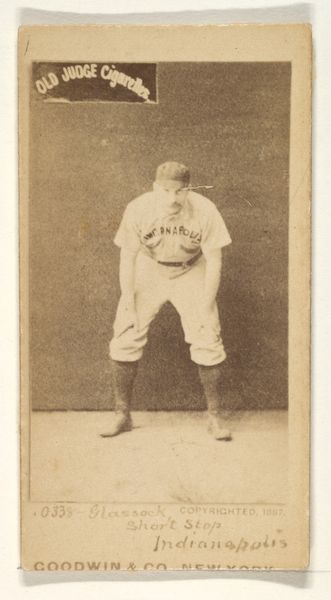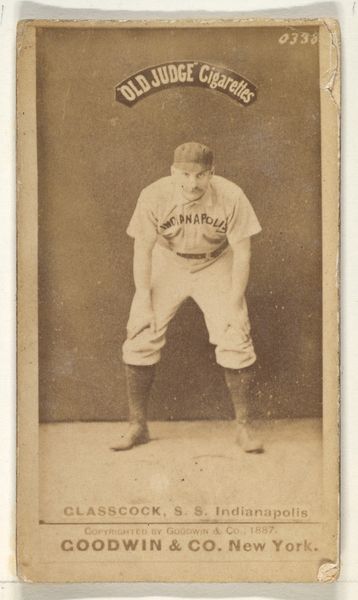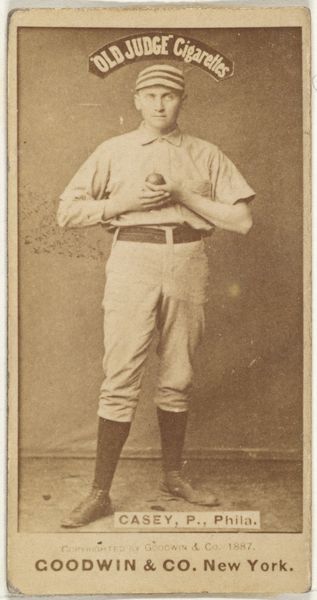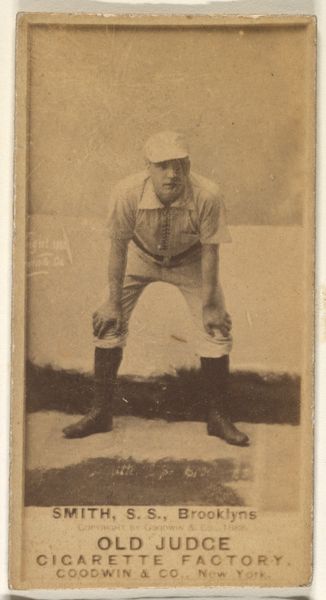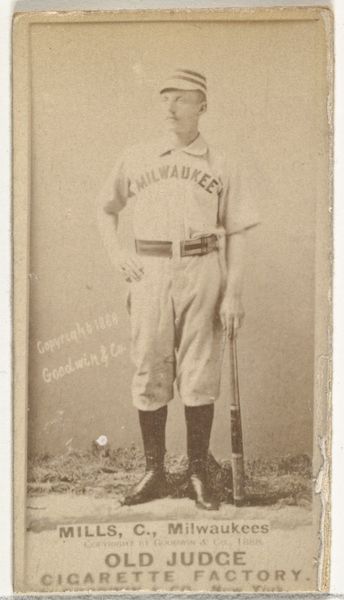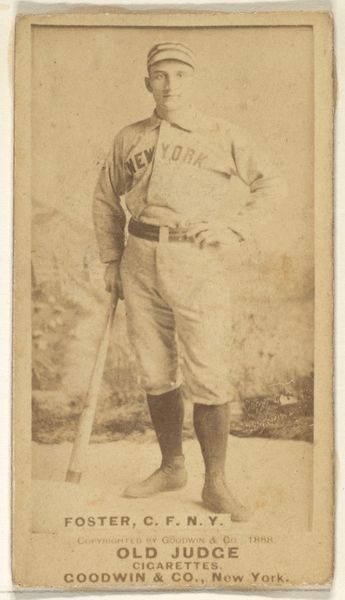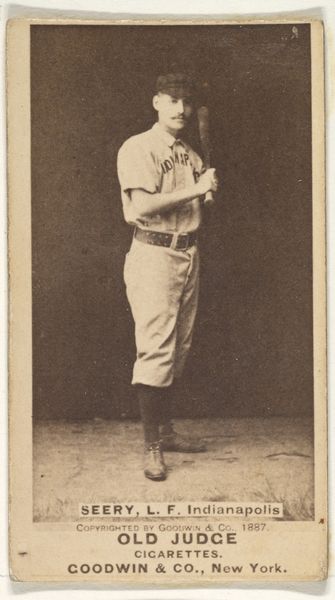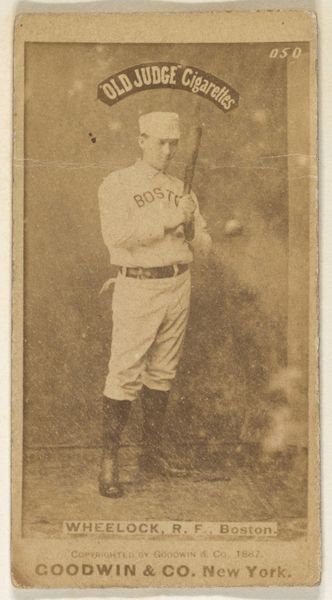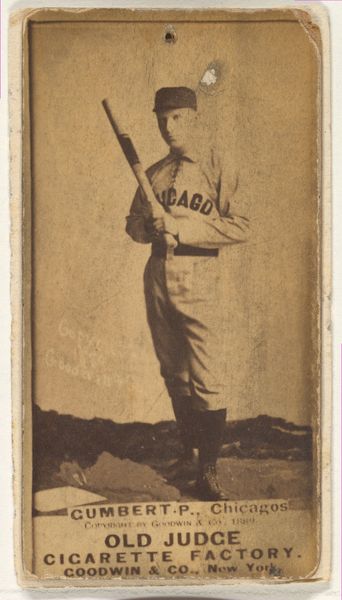
John Thomas "Tug" Arundel, Catcher, Indianapolis, from the Old Judge series (N172) for Old Judge Cigarettes 1887
0:00
0:00
drawing, print, photography, albumen-print
#
portrait
#
drawing
# print
#
photography
#
men
#
athlete
#
albumen-print
Dimensions: sheet: 2 11/16 x 1 3/8 in. (6.9 x 3.5 cm)
Copyright: Public Domain
Curator: Let's discuss this albumen print from 1887. It's part of the "Old Judge" series of baseball cards, specifically a portrait of John Thomas "Tug" Arundel, a catcher for Indianapolis. Editor: My initial impression is that of a staged formality that still captures the nascent commercialization of sports, and how everyday culture—like cigarette consumption—helped forge a sense of collective identity. It feels very much of its time. Curator: Absolutely. Note the meticulous composition: Arundel's stance, the centered framing. The tones, sepia-soaked, add to its feeling of dignified antiquity. It emphasizes line and shape rather than textural details. It's almost like a classical bust transported into a baseball diamond. Editor: That sepia tone evokes nostalgia, of course, but also, given it's a cigarette card, invites us to consider the broader historical context. Mass media, the burgeoning sports industry, and, of course, the pervasive, often unregulated marketing of harmful products like cigarettes. Curator: Precisely, but within those bounds, the clarity of the albumen print really shows how Goodwin & Company exploited new photographic processes, how the image structure works to communicate idealized attributes and how they capitalized on early celebrity culture. The crisp edges against a diffused background—a careful interplay. Editor: It's also a commentary on masculinity. A constructed masculinity centered on athleticism and the culture of leisure – and, tacitly, on habits that directly undermined the athlete's physical form. A tragic paradox, when viewed from today's vantage. These types of baseball cards reinforced gender norms and commodified sporting heroes, selling not just a product, but also a vision of ideal manhood. Curator: You raise valid and uncomfortable points about how it normalizes a specific masculine prototype through structure. Though my focus draws toward formal organization and visual techniques. It provides structure for its meanings—like how Arundel almost pops from the backdrop in sepia, or its crisp edge. It makes its semiotic purpose extremely apparent. Editor: Yes, both readings aren't mutually exclusive. Considering both composition and historical context grants a layered approach. Ultimately, it reminds us of how much popular art both reflects and molds societal norms and desires, with some nasty and unethical elements thrown in, even from this humble baseball card. Curator: An unexpectedly insightful glimpse, wouldn’t you agree? Editor: Quite so. The layering makes for surprisingly rich study.
Comments
No comments
Be the first to comment and join the conversation on the ultimate creative platform.
